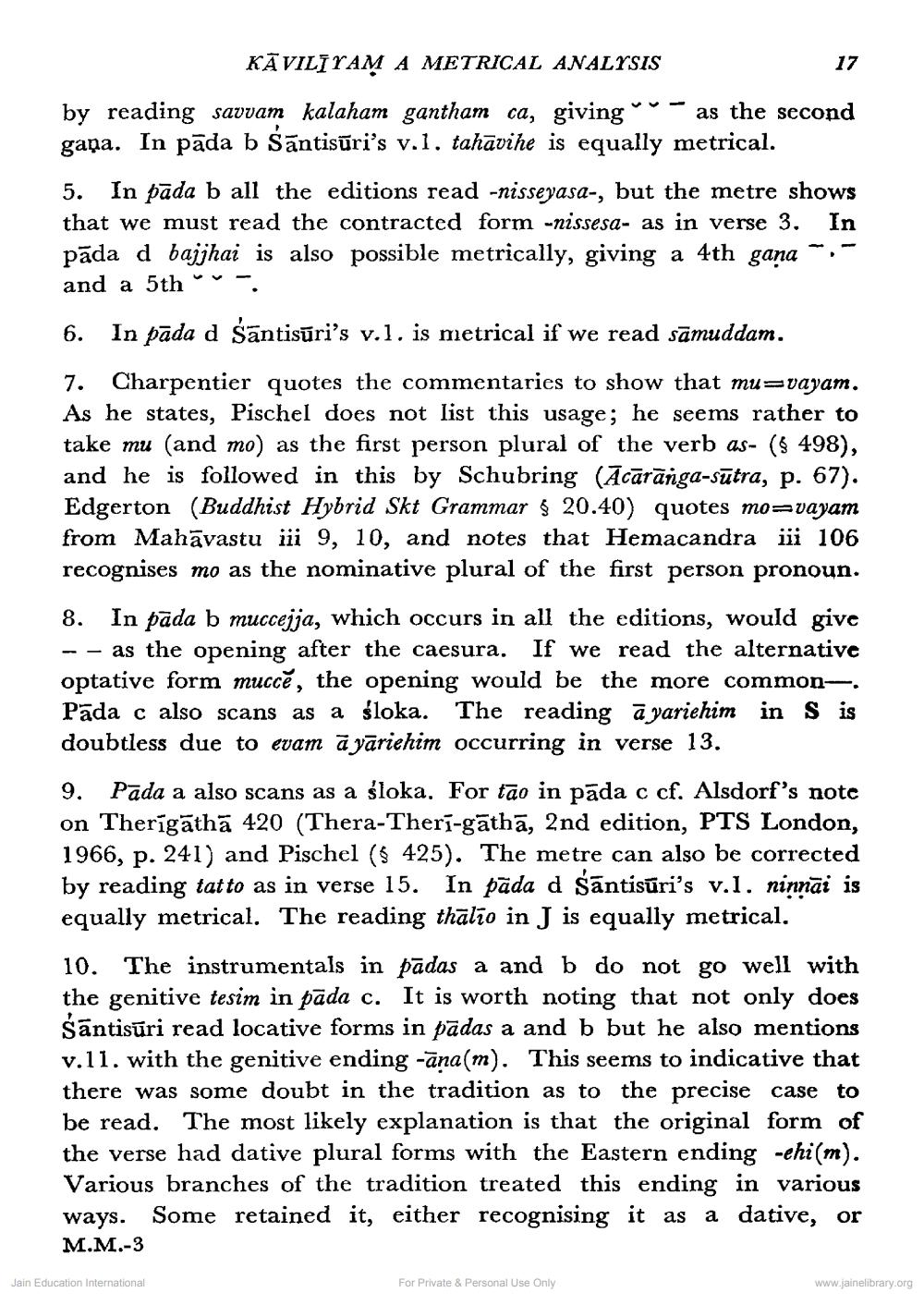________________
KĀVILĪYAM A METRICAL ANALYSIS
by reading savvam kalaham gantham ca, giving as the second gana. In pāda b Santisūri's v.l. tahāvihe is equally metrical.
5. In pāda b all the editions read -nisseyasa-, but the metre shows that we must read the contracted form -nissesa- as in verse 3. In pāda d bajjhai is also possible metrically, giving a 4th gana“, - and a 5th " 6. In pāda d Santisūri's v.l. is nietrical if we read sāmuddam. 7. Charpentier quotes the commentaries to show that mu=vayam. As he states, Pischel does not list this usage; he seems rather to take mu (and mo) as the first person plural of the verb as- ($ 498), and he is followed in this by Schubring (Acārānga-sūtra, p. 67). Edgerton (Buddhist Hybrid Skt Grammar $ 20.40) quotes mo=vayam from Mahāvastu ji 9, 10, and notes that Hemacandra iii 106 recognises mo as the nominative plural of the first person pronoun. 8. In pada b muccejja, which occurs in all the editions, would give -- as the opening after the caesura. If we read the alternative optative form muccē, the opening would be the more commonPāda c also scans as a sloka. The reading āyariehim in s is doubtless due to evam āyāriehim occurring in verse 13.
9. Pada a also scans as a śloka. For tão in pāda c cf. Alsdorf's note on Therīgāthā 420 (Thera-Theri-gāthā, 2nd edition, PTS London, 1966, p. 241) and Pischel (5 425). The metre can also be corrected by reading tatto as in verse 15. In pāda d śāntisūri's v.1. ninnai is equally metrical. The reading thālīo in J is equally metrical. 10. The instrumentals in padas a and b do not go well with the genitive tesim in pāda c. It is worth noting that not only does Šāntisūri read locative forms in pādas a and b but he also mentions v.11. with the genitive ending -āna(m). This seems to indicative that there was some doubt in the tradition as to the precise case to be read. The most likely explanation is that the original form of the verse had dative plural forms with the Eastern ending -ehi(m). Various branches of the tradition treated this ending in various ways. Some retained it, either recognising it as a dative, or M.M.-3
Jain Education International
For Private & Personal Use Only
www.jainelibrary.org




